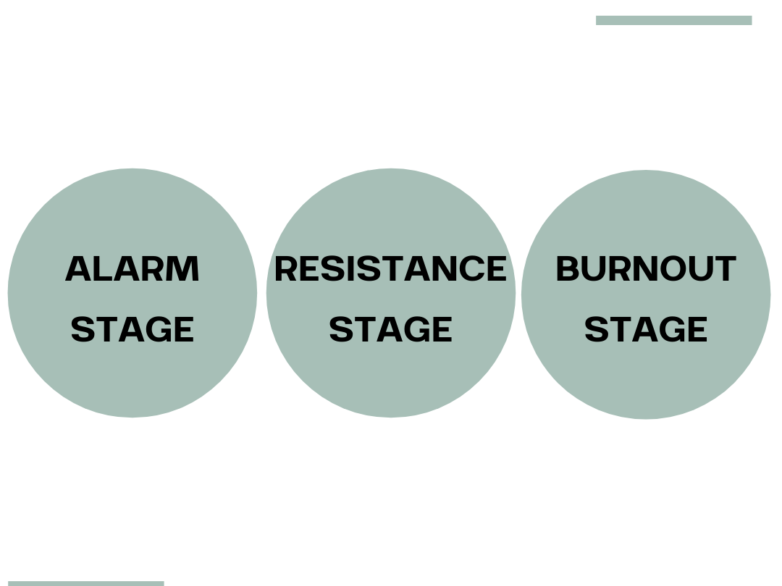
The 3 Stages Of Adrenal Fatigue
When the body is under stress, whether it is emotional (work/life, relationships) or chemical stress (e.g. gut issues, overworked liver, heavy metals, mould toxicity) it begins to affect our adrenal glands.
Over time your body becomes maladaptive with stress and it begins to shut down certain functions and the adrenal glands stop producing enough cortisol. This is when you start to see symptoms like tiredness, trouble falling asleep at night or need stimulants like caffeine to get through the day.
Unfortunately, conventional medicine does not actually recognise this condition unless the person has reached an extreme point, like Addison’s disease. In integrative medicine, we understand that there are phases before a person reaches that stage and that is what true preventative health is all about.
WHAT IS OUR NATURAL DIURNAL RHYTHM LIKE?
First, we need to understand what our normal cortisol levels should be like.
10,000 years ago, we didn’t have electricity so we would be waking up with the sun and going to bed when the sun went down.
Cortisol production is usually at its peak 30 minutes after waking and declines steadily during the day, reaching its lowest point between 9-9:30pm and starts to go up again after 10pm.
The rise in cortisol takes place because it is the body’s own natural response as this is when it detoxifies and cleanses itself.
However, those with adrenal gland dysfunction have irregularities in their diurnal cortisol curves and so it throws their whole body out of whack.
STAGES OF ADRENAL FATIGUE:
1. Alarm Stage
At this stage, there is higher than normal cortisol production throughout the day. Interestingly enough, I don’t see much of this in my practice because individuals here feel great because they can work all day and sleep for just 5-6h. They most probably suffer from anxiety but they feel like they can do it all.
The problem is that this is the first step into the pathway of adrenal fatigue and it is burning out the body. The massive amounts of adrenaline causes the person to go through a lot of their minerals.
Calcium will be pulled to the blood to get into the state of “fight or flight” and this is why a lot of people have elevated levels of calcium in their blood.
Magnesium and potassium will also be used due to the breakdown of tissues taking place. A lot of the times, sodium will be retained in order to raise blood pressure as well.
This is why a hair tissue mineral analysis test is absolutely amazing when it comes to evaluating the levels of oxidative stress in the body. It looks at all your mineral levels as well as heavy metal toxicity.
2. Resistance Stage
Cortisol output here is lower than normal in the morning and noon but then higher than normal in the evening and before bedtime.
The problem here is that a lot of the reserves have been used up and the body cannot produce as much cortisol in the morning which is when the highest spike should take place.
I see this often in clients with symptoms of exhaustion, fatigue, anxiety and sometimes sleep issues.
They are no longer able to adapt to the stress in their life. They might be a little bit groggy in the morning, slow to get going, more dependent on caffeine and don’t feel refreshed upon waking.
Later in the day however, they start to get more energy. This is the resistance stage of stress and it is considered as adrenal dysfunction.
3. Burnout Stage
This is when the body’s HPA Axis has finally shut down and cortisol levels are not being elevated enough to meet stress demands.
Those in this stage have a low anti-inflammatory response, weakened immunity, low libido/ambition/drive/energy, poor response to exercise, feel flu-like symptoms and are unable to regulate many of the systems of their body properly (i.e. blood sugar).
This person may or may not have Addison’s Disease and only a medical doctor would be able to run testing for a diagnosis.
I get quite a few clients at this point and a lot of work needs to be done to come down from this stage.
It is not an overnight fix and I usually see an improvement of 10% every month even though some people don’t take that long to recover.
WHAT NOW?
Even though a lot can be done by identifying symptoms alone, it is always better to test and not guess.
We can identify what stage you’re in by running a simple at-home saliva test that will look at your cortisol levels at 4 different times of the day.
Once we know, we can then slowly start to rebuild the body by working on the internal and external stressors.
We can work backwards and help everyone if we begin to understand these systems.

Follow Our Instagram For Exclusive Content





 د.إ / AED
د.إ / AED



Leave a comment